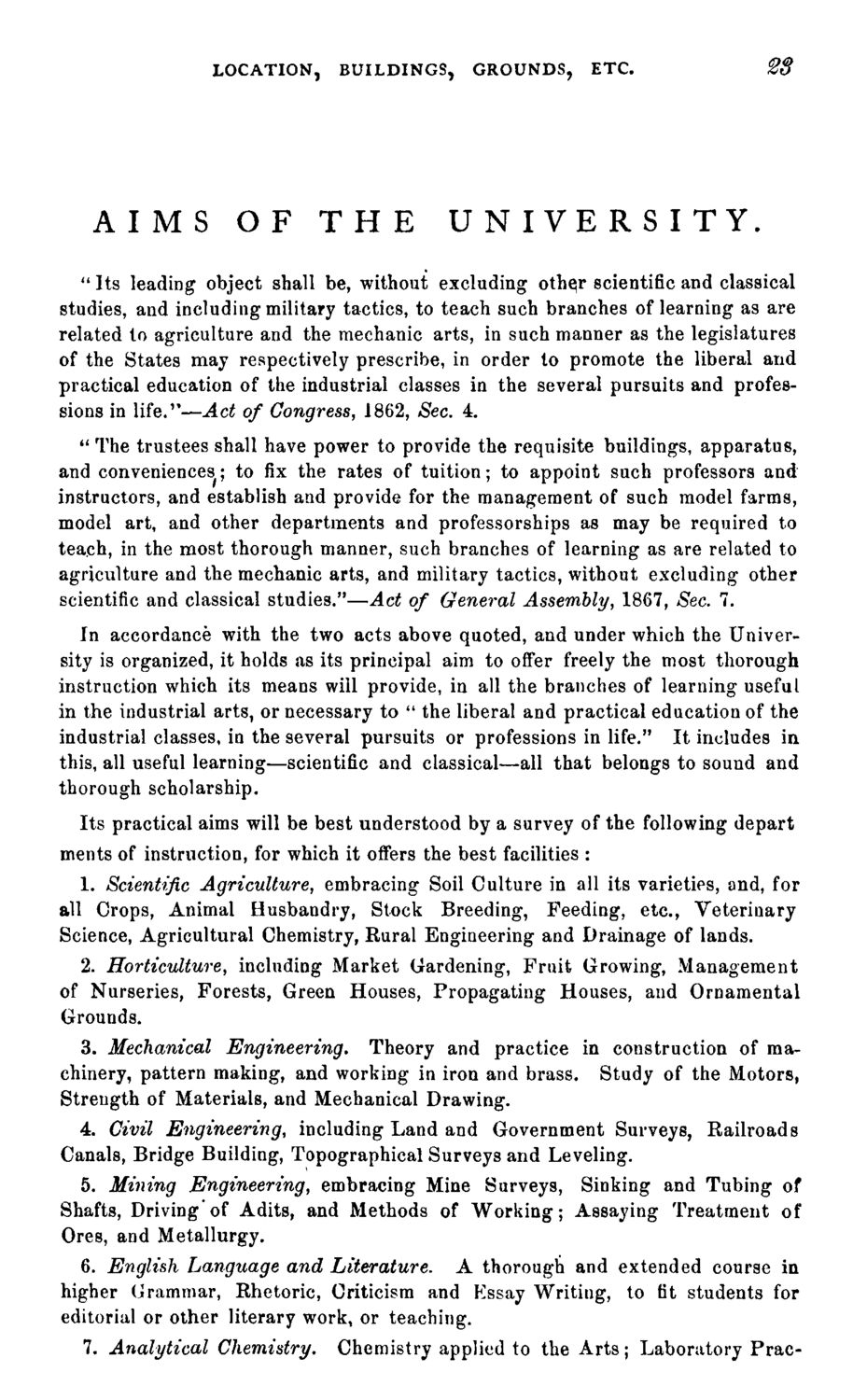| |
| |
Caption: Course Catalog - 1871-1872
This is a reduced-resolution page image for fast online browsing.

EXTRACTED TEXT FROM PAGE:
LOCATION, BUILDINGS, GROUNDS, ETC. AIMS OF THE UNIVERSITY. " Its leading object shall be, without excluding othqr scientific and classical studies, and including military tactics, to teach such branches of learning as are related to agriculture and the mechanic arts, in such manner as the legislatures of the States may respectively prescribe, in order to promote the liberal and practical education of the industrial classes in the several pursuits and professions in life."—Act of Congress, J862, Sec. 4. " The trustees shall have power to provide the requisite buildings, apparatus, and conveniences; to fix the rates of tuition; to appoint such professors and instructors, and establish and provide for the management of such model farms, model art, and other departments and professorships as may be required to teach, in the most thorough manner, such branches of learning as are related to agriculture and the mechanic arts, and military tactics, without excluding other scientific and classical studies."—Act of General Assembly, 1867, Sec. 7. In accordance with the two acts above quoted, and under which the University is organized, it holds as its principal aim to offer freely the most thorough instruction which its means will provide, in all the branches of learning useful in the industrial arts, or necessary to " the liberal and practical education of the industrial classes, in the several pursuits or professions in life." It includes in this, all useful learning—scientific and classical—all that belongs to sound and thorough scholarship. Its practical aims will be best understood by a survey of the following depart ments of instruction, for which it offers the best facilities : 1. Scientific Agriculture, embracing Soil Culture in all its varieties, and, for all Crops, Animal Husbandry, Stock Breeding, Feeding, etc., Veterinary Science, Agricultural Chemistry, Rural Engineering and Drainage of lands. 2. Horticulture, including Market Gardening, Fruit Growing, Management of Nurseries, Forests, Green Houses, Propagating Houses, and Ornamental Grounds. 3. Mechanical Engineering. Theory and practice in construction of machinery, pattern making, and working in iron and brass. Study of the Motors, Strength of Materials, and Mechanical Drawing. 4. Civil Engineering, including Land and Government Surveys, Railroads Canals, Bridge Building, Topographical Surveys and Leveling. 5. Mining Engineering, embracing Mine Surveys, Sinking and Tubing of Shafts, Driving'of Adits, and Methods of Working; Assaying Treatment of Ores, and Metallurgy. 6. English Language and Literature. A thorough and extended course in higher Grammar, Rhetoric, Criticism and Essay Writing, to fit students for editorial or other literary work, or teaching. 7. Analytical Chemistry. Chemistry applied to the Arts; Laboratory Prac-
| |